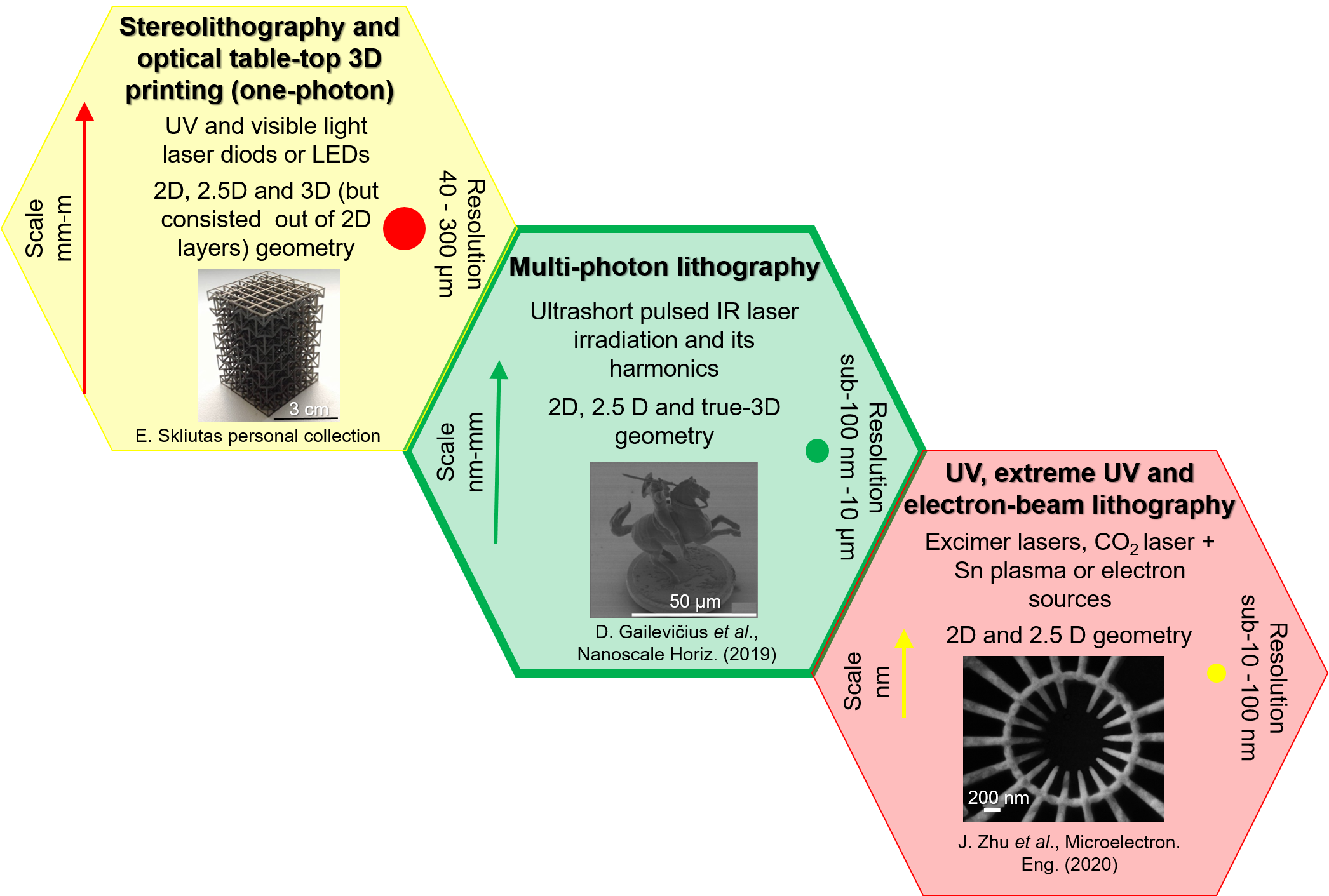Ultrafast laser 3D lithography based on non-linear light-matter interactions, widely known as multi-photon lithography (MPL), offers unrivaled precision rapid prototyping and flexible additive manufacturing options. 3D printing equipment based on MPL are already commercially available, yet there is still no comprehensive understanding of factors determining spatial resolution, accuracy, fabrication throughput, repeatability, and standardized metrology methods for the accurate characterization of the produced 3D objects and their functionalities. The photoexcitation mechanisms, spatial-control or photo-modified volumes, and the variety of processable materials are topics actively investigated. The complexity of the research field is underlined by limited understanding and fragmented knowledge of light-excitation and material response. Research to date has only provided case-specific findings on photoexcitation, chemical modification, and material characterization of the experimental data. In this review, we aim to provide a consistent and comprehensive summary of the existing literature on photopolymerization mechanisms under highly confined spatial and temporal conditions, where, besides the excitation and cross-linking, parameters such as diffusion, temperature accumulation, and the finite amount of monomer molecules start to become of critical importance. Key parameters such as, photoexcitation, polymerization kinetics, and the properties of the additively manufactured materials at the nanoscale in 3D are examined, whereas, the perspectives for future research and as well as emerging applications are outlined.

